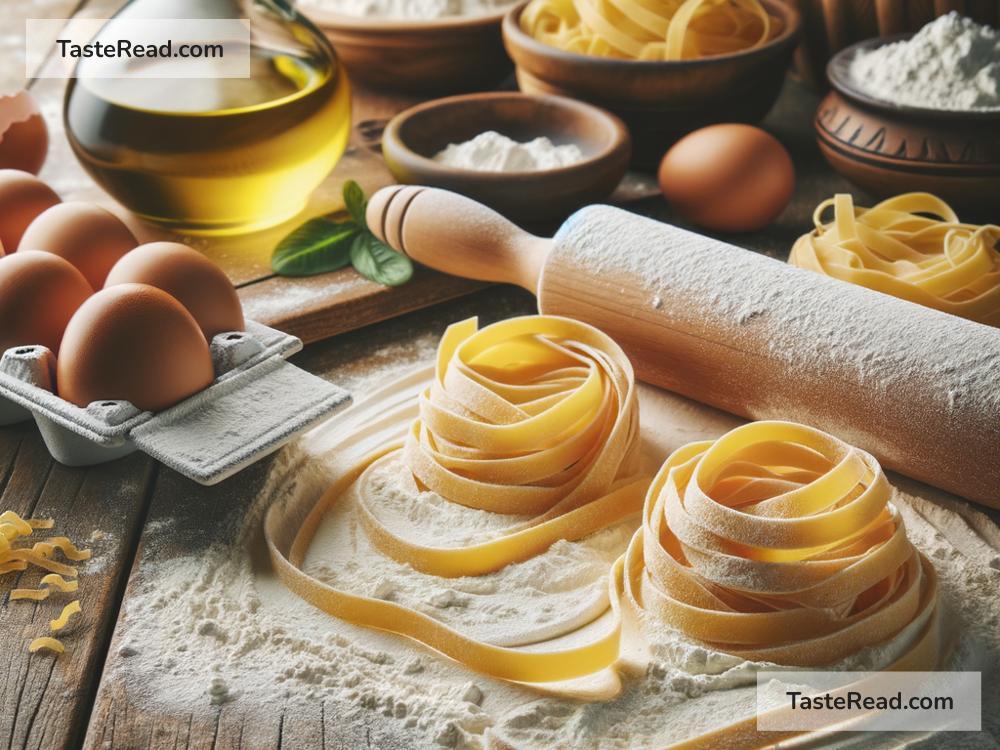Mastering Homemade Pasta: A Step-by-Step Recipe for Fettuccine
There’s something magical about homemade pasta. It’s fresh, flavorful, and has a chewy texture you just can’t get from store-bought varieties. Making pasta at home might sound intimidating, but with a little practice, you’ll see it’s not as hard as it looks. Plus, it’s a fun kitchen project for any day! In this blog, we’ll walk you through step-by-step how to make delicious homemade fettuccine that’ll impress your friends and family.
So, grab your apron and let’s get started!
What You’ll Need
Before diving in, let’s gather the ingredients and tools you’ll need. The beauty of pasta is in its simplicity. You only need a few basic items to make it.
Ingredients:
- 2 cups of all-purpose flour (or you can use semolina flour for a richer flavor)
- 3 large eggs
- A pinch of salt
- Extra flour for dusting
Tools:
- A clean countertop or large mixing bowl
- Rolling pin (optional: pasta machine)
- Sharp knife or pizza cutter
- Fork
- A clean kitchen towel
Step 1: Make the Dough
Start by pouring your flour into a pile on a clean counter or in a large bowl. Use your fingers or fork to create a “well” in the center that looks like a little volcano. Crack the eggs into the well.
Take a fork and gently whisk the eggs, slowly pulling in some of the surrounding flour as you go. Keep mixing until the dough starts coming together. Once it’s too thick to keep using the fork, get ready to use your hands.
Begin kneading the dough by pressing it, folding it, and rotating it. It may feel sticky at first, but with enough kneading (about 8–10 minutes), you’ll create a soft and smooth ball of dough. If the dough feels too dry, add a few drops of water, and if it’s too sticky, sprinkle on a touch of extra flour.
Wrap the dough ball in plastic wrap or cover it with a clean kitchen towel. Let it rest for about 30 minutes. Resting helps the gluten relax, making the dough easier to roll out.
Step 2: Roll Out the Dough
After the dough has rested, it’s time to roll it out. Divide the dough into two pieces to make it easier to work with. Dust your countertop lightly with flour to prevent sticking.
Using a rolling pin, roll out one piece of dough into a thin sheet. If you have a pasta machine, this step will be even easier! Run the dough through the machine, starting from the thickest setting and gradually moving toward thinner settings. Your goal is to create a sheet of dough that’s about 1–2 mm thick (almost paper-thin).
Repeat the process with the second piece of dough.
Step 3: Cut the Fettuccine
Now comes the fun part — cutting the pasta! Fettuccine is a type of pasta that’s cut into wide ribbons, typically about ¼ inch thick. To do this, lightly dust your rolled-out dough with flour. Fold it gently into thirds (like folding a piece of paper) or roll it loosely into a cylinder.
Using a sharp knife or pizza cutter, slice the dough into even strips. Once you’ve finished cutting, unfold the ribbons and lay them flat. Sprinkle a bit of flour over them to keep them from sticking together.
If you’re using a pasta machine, many models include a cutting attachment for making fettuccine. Simply run your dough through the cutter to create perfect ribbons.
Step 4: Cook the Fresh Pasta
Fresh pasta cooks much faster than dried pasta. Bring a large pot of salted water to a boil. Drop in your fettuccine ribbons and let them cook for about 2–3 minutes, or until they rise to the surface and soften. Taste a piece to check for doneness; they should be tender, with just a little bite.
Once cooked, drain the pasta and lightly toss it with olive oil or butter to keep it from sticking. Now you’re ready to add your favorite sauce!
Step 5: Pair with Your Favorite Sauce
Fettuccine pairs beautifully with creamy sauces like Alfredo, tomato-based sauces like marinara, or simple olive oil and garlic dressings. You can even toss it with sautéed vegetables, grilled chicken, or shrimp for a complete meal.
Tips for Success
- Start simple: Don’t worry if your first batch of pasta isn’t perfect. Practice makes progress! The more you make pasta, the easier it will get.
- Use the right flour: All-purpose flour works great, but if you want to experiment, try using semolina flour for a smoother texture and richer flavor.
- Keep it well-floured: Fresh pasta can stick easily, so remember to dust your surfaces with flour as you work.
- Invest in a pasta machine: While you don’t need one to make pasta, a machine makes rolling and cutting faster and more consistent.
Why Make Homemade Pasta?
Homemade pasta is a true labor of love. Not only is it fresh and customizable, but making it can be incredibly rewarding. It brings an old-world charm to your kitchen and allows you to craft meals with care and creativity.
So, next time you’re craving pasta, skip the dried store-bought kind, and give homemade fettuccine a try. With just a handful of simple ingredients and a little effort, you can create a dish that tastes like restaurant-quality comfort food.
Happy cooking! 🍝


